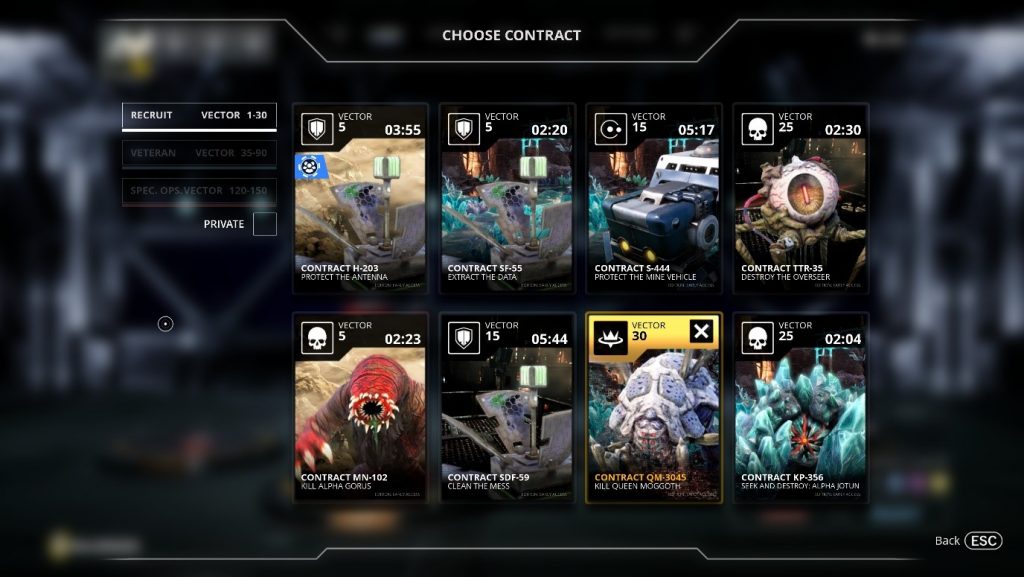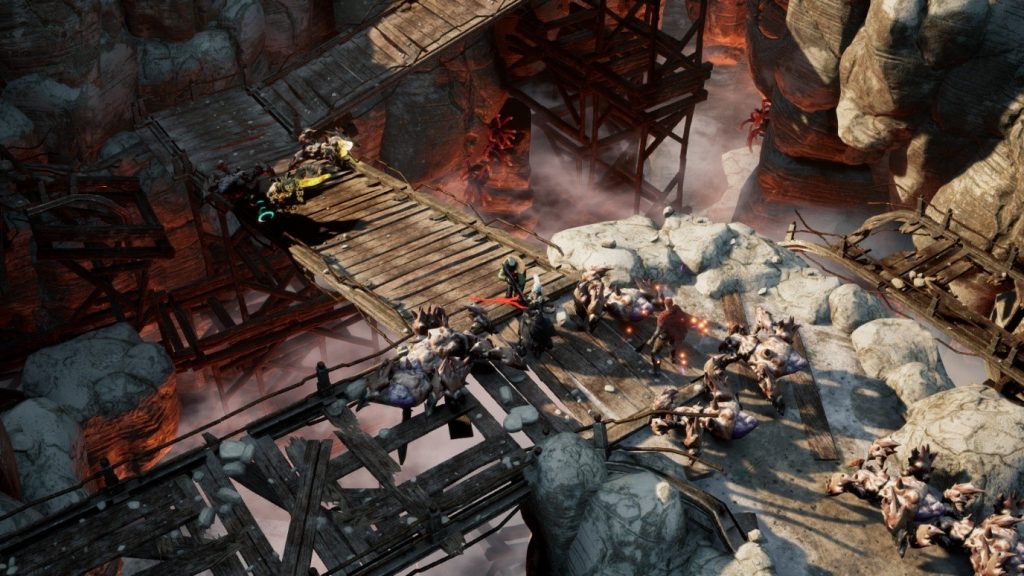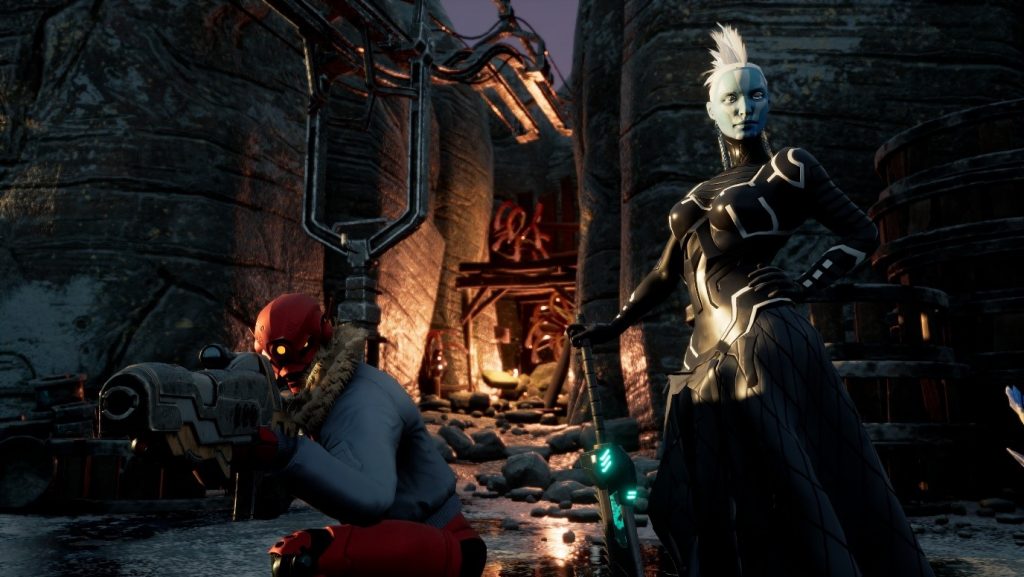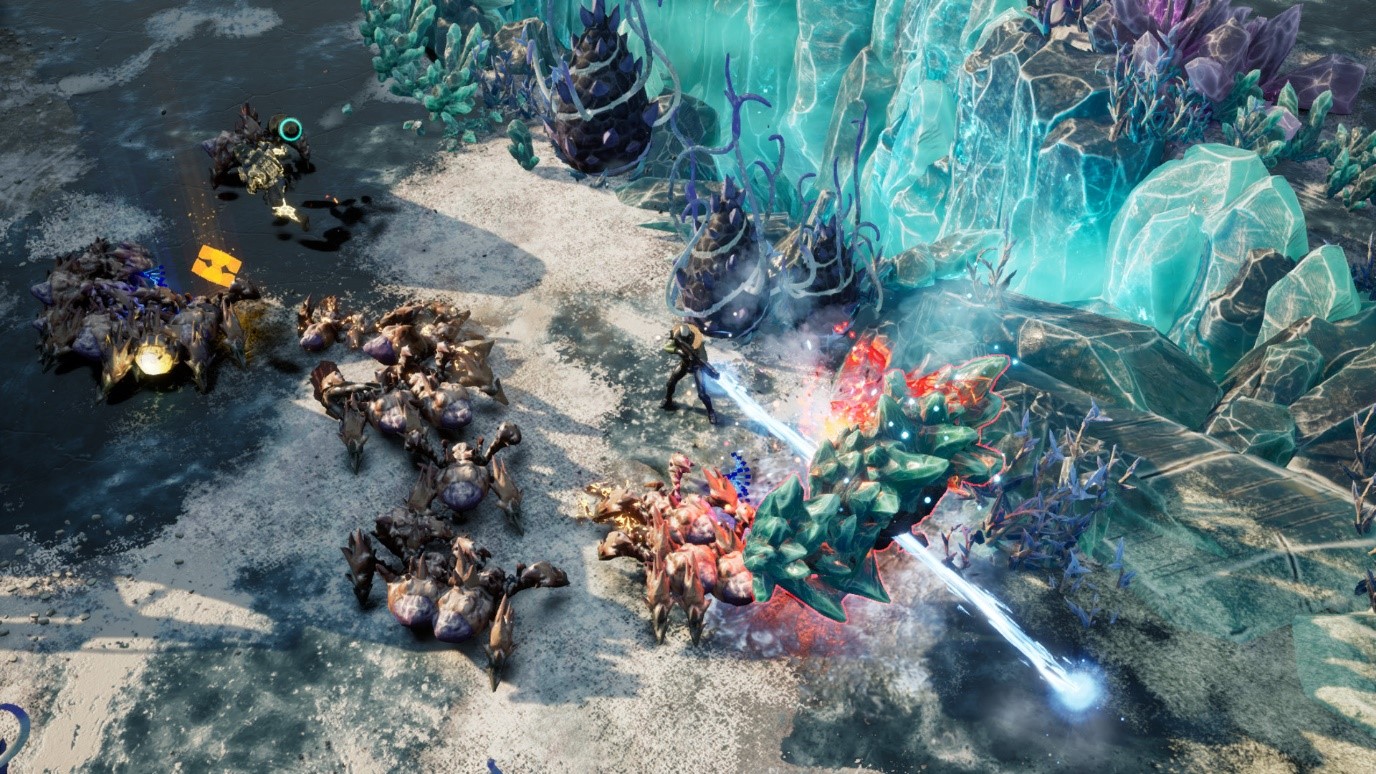The somewhat cringingly-named Killsquad is a new sci-fi action role play game from Novarama. The ARPG genre is almost exclusively dominated by games which merrily wear their Diablo influences all over their faces let alone their sleeves. Yet, Killsquad does a few things rather differently to set itself apart. The steam page for the game says ‘Killsquad looks like an RPG but plays like an action game’ and after a few minutes it’s obvious exactly what they mean.
When I first launched into a contract (an individual procedurally-generated mission rather than part of a connected campaign) I was briefly confused by the control scheme. It may look like Diablo but Killsquad is less intent on destroying your mouse. Movement is controlled by WASD, with the mouse buttons used for primary and secondary attacks. On top of that each character has a further ability on E and, bafflingly, shift as well as a movement ability (dodge roll, dash or similar) on spacebar. It’s clear that MOBAs have influenced gameplay here too. Rather than levelling your character up slowly through a campaign you will be levelling from 1-10 in each contract, unlocking an ultimate ability (Q) at level 6.
Each contract lasts 15-20 minutes, seeing you wade through hordes of weak enemies with occasional elites until you get to the mission target which might be an assassination of a boss enemy or a ‘hold this area against a horde’ type affair. You can play these in private mode either solo or with up to 3 of your friends, or you can dive into public matchmaking which is the default option. You select a contract from a set of eight, which are the same ones available to everyone else for the time they’re up for, before being replaced by a new procedurally generated mission. There are three difficulty bands available, with the higher ones requiring you to have a higher ‘vector’.

While the levelling is a rapid affair taking place within each mission there is still progression between contracts in the form of gear. Gear can drop from chests and bosses in levels or can be bought with credits – which is the currency you are rewarded with for completing contracts. In fine ARPG tradition players select an item type and receive a random reward of that type so they may or may not get something actually useful. The amalgamation of your item levels is the vector for that hero, determining what level of content you can access while playing as them. The items themselves fit into one of three slots for each hero – a weapon, a support item and a prototype item. Weapons generally have modifiers for your abilities or give chances of inflicting burning or bleed damage. Support items may increase your health while prototypes adjust likelihood of gear drops or credit pay-outs. There is also an upgrade system requiring you to dismantle items to upgrade others and get more bonuses.
At Early Access launch there are four heroes available, fitting broadly into the categories of melee tank, melee and ranged damage dealers and ranged support, though the roadmap for game updates include at least two more. Each of these feels nicely distinct and each has got something going for it among the available abilities. Plus, there are interesting choices among the upgrades to pick from as you level up. All of the classes feel viable for solo play, though also compliment each other well in cooperative play – particularly the support class Zero as the ability to drop healing crates can be a great help.
While having fun abilities to use is critical it is still only half the story – an ARPG lives or dies on how interesting the enemies are to fight as well. In Killsquad the trash isn’t perhaps quite as satisfying to blast through as the demon hordes of Diablo but they are still decent enough. They do well at their main job which is complicating fights with more interesting rare enemies. Fortunately, the rares are well designed, with a variety of abilities with effects that make it obvious what’s going on – which is key in the busy battlefields of ARPG-land.

Technically Killsquad did not give me a great first impression; the main menu runs inexplicably badly at a 4k resolution and my rig struggled to maintain 20-30fps, feeling stuttery all the way. The only thing which improved matters was reducing display resolution or render resolution, which was disappointing. Once in-game though this problem disappeared and a buttery 60fps was maintained at 4k with all the settings maxed out, so while odd this issue doesn’t really make too much difference, and if you aren’t playing at very high resolutions you probably won’t run into it at all.
There are plenty of graphics settings to tinker with if you do run into performance problems in gameplay. Sadly, there is not currently key rebinding functionality so you’re stuck with the defaults, though you can use a gamepad if you wish. The menus are functional and look slick but aren’t as intuitive as one might hope, and compared to other similar PC games inventory management controls a little different (LMB to equip not RMB for example). Graphically the game is mostly great with nice modelling and animations and interesting levels, though there are occasionally some areas where the elements of the tile-set don’t quite like right next to each other, and I have seen a few holes in the terrain though only off the playable area so there was no risk of it disrupting gameplay.
The only real issue with the interface is the party system – it runs through steam and getting people into your part is easy, but your party is always separated after completing a contract which is very irritating when you are playing with friends. Worse, if you select a contract then cancel out it breaks up the party which is particularly irritating if you have forgotten to click the ‘private’ checkbox if you don’t want to matchmake with randoms to make your party up to four.

Another area which is lacking is the tutorial – there isn’t one of any kind in-game. While learning on the job isn’t necessarily a bad thing a few popups in your first game at least would go a long way towards explaining how you should approach the game. Initially I was confused over what the DNA I was picking up was used for, eventually figuring out that they are used at in-level vendors. A simple tooltip popping up the first time to let you know that and that any leftover at the end of the level would be converted to the main currency (credits) would have been useful. Another player went through their entire first level without dodging as they didn’t realise it was an option. The controls for your attacks are labelled in the HUD but not Space to dodge. This was particularly irritating as the class they were playing as deals damage by dashing through enemies. Since my first foray into the game the developers have released some tutorial videos on YouTube but there is still nothing in-game.
Once you have gotten used to the way Killsquad works though it really is a lot of fun. The combat is satisfying and manages to be decently varied, with short snappy games which are easy to fit into a busy schedule. Novarama have published a roadmap of post-launch support which will expand the game from 3 to 4 areas in August, add a new variety of enemies in September and a new hero at Halloween among various events and other additions. This pledge of support is very encouraging and I can easily see myself keeping it installed and regularly dipping back into Killsquad for a quick contract or two for a long time to come.
[Editor’s Note: Killsquad was provided to us for the preview. The game is now available on Steam’s Early Access feature.]

